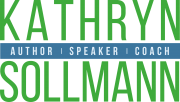Is your job search at a standstill? Time to make sure you’re dotting all the i’s and crossing all the t’s. Even senior-level job seekers tend to overlook the basics–and blame the job market rather than their own job search approach. Here are the 80 best pounding the pavement tips from 9 Lives for Women blogs…
Spend 85% of Your Job Search Time Networking
- Remember that finding a job is a full-time job—fill long days with networking.
- Don’t assume that only outgoing people can make solid networking connections.
- Don’t get lost in the sea of resumes sent to internet job sites. It’s a black hole in which few job seekers are successful.
- Realize that networking is a multi-step process that leads you–person by person–to the connections you want and need. Believe that every connection brings you one step closer to a powerful connection.
- Draw networking strength from the fact that you are now 4.74 people away from anyone you want to know. (It’s no longer 6 degrees of separation!)
- Don’t ever say that you have run out of networking contacts: it is impossible in this lifetime, especially with a networking site like Linkedin.
- Conduct the majority of your networking via email or Linkedin: people you don’t know prefer not to be interrupted or put on the spot by phone.
- Identify the skills that truly distinguish you in the sea of job applicants—and talk up these skills in all networking conversations or emails.
- Know that when you’re networking there’s no such thing as TMI (too much GOOD information). Be very specific about your areas of expertise—marketing, for example, is a huge field with many specialties.
- Make sure that you have really thought about every category of your life where you meet and know people—children’s schools, clubs, book groups, sports teams, religious affiliations, professionals like your attorney, accountant, etc. When you have identified everyone to contact in each of your categories, then run through the same categories for your husband, your sister, your best friend, etc.
- Don’t forget a major networking resource: your school alumni associations.
- When it comes to networking, think quality not quantity: network with people relevant to your job search.
- Get creative about finding on the spot ways to help people you meet: offer information about a college their children are interested in, suggest a great business or generally thought-provoking book, suggest ways that you beat stress when you hear they’re on a tight deadline. Anything that will help someone remember you.
- Go to limited, very strategically chosen networking meetings (you can do so much more networking online) with an open mind: even people in different business sectors can introduce you to influential individuals or companies.
- Think of in-person networking not as the shallow distribution of business cards: it’s an opportunity to make memorable and lasting connections.
- Find the person in the room who is wearing the brightest tie or dress. They are asking to be noticed and will be easier to approach.
- Try to find a fellow job seeking “buddy” for support in exchanging job opportunities, introducing you to different people, offering advice and a different perspective—and getting you through job search ups and downs.
- Share with others—both opportunities and contacts—and your generosity will come full circle.
Fall in Love with Linkedin
- Don’t be shy: Linkedin members join with the understanding that it is a place to offer and get help.
- Don’t assume that Linkedin is for mid-level job seekers: one-third of Linkedin members are at the senior levels, including about 6 million in the C-suite.
- Consider Linkedin a place for active job searching—not just occasional networking.
- Recognize that Linkedin is not only a mecca for big corporate types. Roughly half of Linkedin members work for companies that have less than 5,000 employees—and 25% of that subgroup work for even smaller companies with less than 200 employees.
- Stop thinking that your best bet is to find a job through a recruiting firm. In a difficult economy most companies avoid placement fees and rely on Linkedin.
- Don’t slap together a Linkedin profile. Take time to assemble information in a way that will bring results.
- Don’t list your employment status as your Linkedin headline (the first thing people see when you come up in a search). List your area of expertise (a strength) rather than your lack of a job (a weakness).
- Make at least 50 Linkedin connections to have a complete profile, but generally assume that quality is better than quantity. Relevant connections are key. Build a base of 500 relevant connections and you’ll be considered a visible and influential professional.
- Join Linkedin groups in your areas of interest and participate regularly to get more exposure.
- Ask connections for specific help or information, not: “Do you know of any openings in your marketing department?”
- Send requests for help via email (once someone is a connection) rather than through the Linkedin system. Most people check email more often than Linkedin mail.
Search for a Snug Cultural Fit
- Network not just to find attractive jobs but also to find employers who will be a cultural fit with your values, work ethic and general business practices.
- Know that cultural fit will be the #1 reason you choose a company or a company chooses you.
- Think a little less about the amount of money you want to earn and a little more about the health and well-being cost of working in an environment that is not a cultural fit.
- Talk to as many current and former employees of a company as possible (or contact them via Linkedin) to get an insider’s perspective of the day-to-day culture.
- Don’t rely on the carefully crafted company web site for a true–or objective–assessment of a company’s culture.
- Read a variety of articles and blog posts about a company to get a less biased view about culture.
- When you have an offer on the table, consider asking your potential employer if you can spend a day working in the office—attending meetings and watching how employees interact—before you sign on the dotted line.
Write a Skills and Expertise Filled Up to Two-Page Resume
- Write just one all-purpose, transferable skill-focused resume.
- Consider writing a short bio as well to bring the “story” of your resume to life.
- Make sure your resume has a simple format and professional appearance.
- Show recruiters you’ve really thought through your skills and experience by writing a summary statement for the top of your resume.
- Make sure you briefly indicate why certain jobs lasted less than two years.
- Highlight facts and figures—all the size and scope information and metrics that show the extent of your responsibilities and success.
Write a Cover Letter that Sells Your Fit for A Specific Job
- Pursue jobs when you meet at least 75% of the ideal requirements and responsibilities stated in the job description. In this job market it’s fairly easy for employers to get close to 100% of their ideal.
- Always write a cover letter customized to the job. You can’t always attach a cover letter to an online application—and that’s a reason why to minimize online job searching.
- Fill your cover letter with a point-by-point match-up of your skills and experience with the requirements/responsibilities of the job.
- Don’t ignore the responsibilities and requirements you cannot meet. Tell employers you meet all of their requirements except A, B and C. Explain why it shouldn’t be an issue…because you have done something similar, you’re willing to take a course, you’ve always been a quick learner with new software programs, etc.
- Remember that you’ll land a job when you can solve a problem for an employer. Make it clear in your cover letter that you are the answer to the problem—or the gap on the employer’s team.
- Don’t worry about keeping your cover letter to one page. If you are doing a good job selling your fit, recruiters will definitely read up to two pages.
- Open your cover letter by expressing your specific interest in the job and company. Employers want to hire people who are sincerely interested in their companies—not just looking for a paycheck.
- End your cover letter by putting yourself on the team: you’re looking forward to doing XYZ in the job. And use the confident and presumptive close: say you will call to set up an interview.
Get Ready to Interview and Be Interviewed
- Consider an interview a two-way exploration.
- Research the company, product lines and competition. Know what issues the company is facing and the good or bad press they’ve received.
- Rehearse a few success stories that will illustrate how you meet the skills and requirements of the job.
- Zero in on the strongest reasons you’re a fit for the job.
- Prepare questions focused on your potential role in the organization: “What’s the structure of the marketing department, and how will I interact with the team?” Or, “How is the annual marketing strategy determined, and what role will I play?”
- Prepare questions that emphasize your strengths and skills. “I enjoy a collaborative, team environment. What’s an example of how the marketing team worked together well on a major project?” Or, “I have extensive project management skills. Do you feel they would be an asset to this position, or do you have designated project managers who play this role?”
- Prepare questions that will reveal the company’s culture: “Do departments work more independently or collaboratively?” “How are decisions made on your team?” “How often are there department and team meetings?” “Do you have an open feedback policy?”
- Find ice breakers. Mine Linkedin and the internet for personal information about your interviewer(s). If you both went to school in Boston, volunteer for the same organization or sail in the summer you’ll have an immediate connection and ice breaker.
- Choose an outfit well before the morning of the interview. Find a few employees either on Linkedin or through personal friends to see if the dress code is extremely formal and traditional or a little more relaxed. In either case, look businesslike and professional. Keep jewelry conservative and to a minimum.
- Plan to carry your resume in some professional version of a briefcase—not folded in your pocketbook or in a manila folder.
- Remember what your mother taught you: smile, firm (but not bone crunching) handshake and direct eye contact.
- Keep your answers brief and concise. There’s a lot of information to cover, and you want to show the interviewer you know how to cut to the chase.
- Prove your success through metrics. Don’t just say you led a successful marketing campaign. Tell the interviewer if you met or exceeded the goal (and by how much), how you increased overall market share, how you saved money and other details that prove your success.
- Weave your strong fit for the job into the conversation more than once.
- Ask the questions you’ve prepared throughout the conversation—don’t wait until the end when your laundry list will seem stilted and unnatural.
- Put yourself on the team. Say things like “When I work on the annual budgeting process” or “When we develop a new marketing campaign”. This approach shows confidence and initiative.
- Be conversational. Don’t sit with your hands folded and do too much nodding of your head. Make sure you get much more than a word in edgewise.
- Postpone lengthy answers to “tell me about yourself” until you’ve heard the interviewer talk about the company’s priorities. Then match your prior successes to key company needs.
- Don’t talk about every detail when you’re asked to “Take me through your resume”. Give a brief summary that is entirely relevant to the position.
- Play back and ask for elaboration on important points. Show the interviewer you’re listening carefully and understanding the responsibilities you would assume.
- Downplay a long job search that may raise employer concerns. Emphasize what you’ve been doing other than looking for a job—volunteering, consulting, mentoring, etc.
- Make all your job moves sound logical and very positive.
- If you were fired from a job, always speak positively about the company and your boss. “Agree” with the company’s business reason to eliminate your position.
- Ask for the sale! An interview is a chance to sell your skills, experience and fit for the job. At the end be sure to tell the interviewer that you want the job—and specifically why you do.
- Write a thank you note within 24 hours (email is fine) that refers back to major responsibilities discussed during the interview and re-emphasizes your fit for the job.
- Follow up if you have not heard any feedback within one week. Be patient: recognize that it takes time for interviewers to conduct other interviews, debrief with their teams and compare candidates.
Put Your Best Foot Forward and Persevere
- Approach your job search with the same professionalism and dedication as a paid work assignment.
- Tune out a lot of conflicting opinions about how to conduct your job search. Listen to your gut and focus on the information that appears most practical in a difficult job market.
- Brush up your sales skills to sell your fit for a job. Think of the best sales professionals you have ever known and incorporate their attributes into your search: tenacity, resourcefulness, persistence.
- Recognize that you are selling employers a service–your many talents.
- Get comfortable bragging about your skills and accomplishments.
- Be honest about whether your job search is suffering from a bad economy or your own job search approach.
- Recognize that if you believe in your skills and expertise, you can sell your skills and expertise. –KAS
Like this post? Please click “like” below and take one minute–literally–to sign up to be an official 9 Lives subscriber here!

 0
Comments
0
Comments

